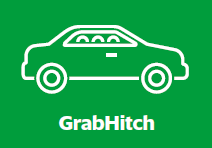Q1 update! It’s been quite fascinating to see how the numbers add up and compare against the cost of having a car.

The table itself is easy to understand :
- Fixed Expenses on a monthly basis to own CocoCar.
- Variable Expenses can fluctuate month on month however it is quite constant given that there isn’t any big road trip just yet to
- Total Cost is mathematical and self-explanatory
- Total Income is our side hustle’s net income. Grab takes 10% of the total income.
- Boo 🙁 Really is to show the cash flow view, which would generally be a negative unless we totally up our Hitch game.
- Cost avoided (public transport)
- Actually, hurray!
Now for a visual and some fun:

As you can see, we have a bit of an expectation gap within the household and it does not help that the actual total income is showing a declining trend.
It’s time we called an emergency Steering Committee meeting and raise this issue as Critical. Or we can just continue to have fun 🙂
Every now and again, we do consider what it would take to net zero on the entire car expenses. The rules of the Grab Hitch game – you can fit more than 1 passenger in the car but limited to 2 rides per day.
The average rate per passenger that we go for and ‘take-home’ is $13.50 per passenger, that would be 111 passengers per month that needs to be completed to cover $1,500. (Of course, do more rides, the petrol cost and ERP increases as well but let’s disregard that for now!)
111 passengers is a lot. We try to fit 2 passengers in the back on the way to work and back from work which amounts to 4 passengers per day, although we typically average 2-3 per day on work days.
At 4 per day on a 21 day work week, that’s 84 of the 111 passengers. A pretty nifty 76%.
At 2 per day on a 21 day work week, that’s 42 of the 111 passengers. A not so fun 38%.
On a good month, we need an additional 27 passengers for which if we get lucky and can fit 4 in a day, that would be 6.7 days of doing 2 Hitch Rides in addition to the work day. That would equate all 3 weekends in a month and a bit more. Ergo, might as well be a Grab driver 🙂 Not very appealing at the moment!
So staying true to the concept of Hitchin’, we’re a couple of happy coconuts 🙂 If you are interested to drive for Grab under the Hitch scheme, then do use our referral link : https://tinyurl.com/y2adaplw and both you and the SippingCoconuts will earn a certain amount (sometimes it’s $20, sometimes it’s $40 – all depends on which way the wind blows for Grab but in the words of Queen –
Anyway, the wind blows; doesn´t really matter to me ).





I was thinking whether it is right that you add in the public transport cost that you avoided. I feel like time is the limited resource here. if you do one thing, you cannot do other thing. If you do grab hitch then you cannot take public transport.
So the opportunity cost of grab hitch is the savings from public transport. So essentially the difference between the two of them.
So it should be taking the cash inflow – cash outflow and compare it to the cash outflow of public transport and what is the difference.
You have shown that Grab Hitch is more worth it. but just wondering the presentation.
Hi Kyith, thanks for commenting. I think the cute naming of the rows and the inconsistent +/- signs may have made things confusing. But essentially yes what we show in the table is Net Car Related Cash Outflow vs Public Transport Outflow. So the “Actually, Hurray!” row shows the amounts we have “saved” by buying a car + hitching.
In fact, the saving is a conservative understatement because we didn’t factor in additional savings from JB shopping (we’ll do a comparison one day of selected groceries 😁) and all the extra car trips we’ve made but we didn’t include the corresponding public transport cost. Our Public Transport Outflow is simply the daily commute to work (a combination of bus, train, and cab) without weekend jalan jalan.
Okay, edited the +/- signs. Hopefully it’s clearer. 😀